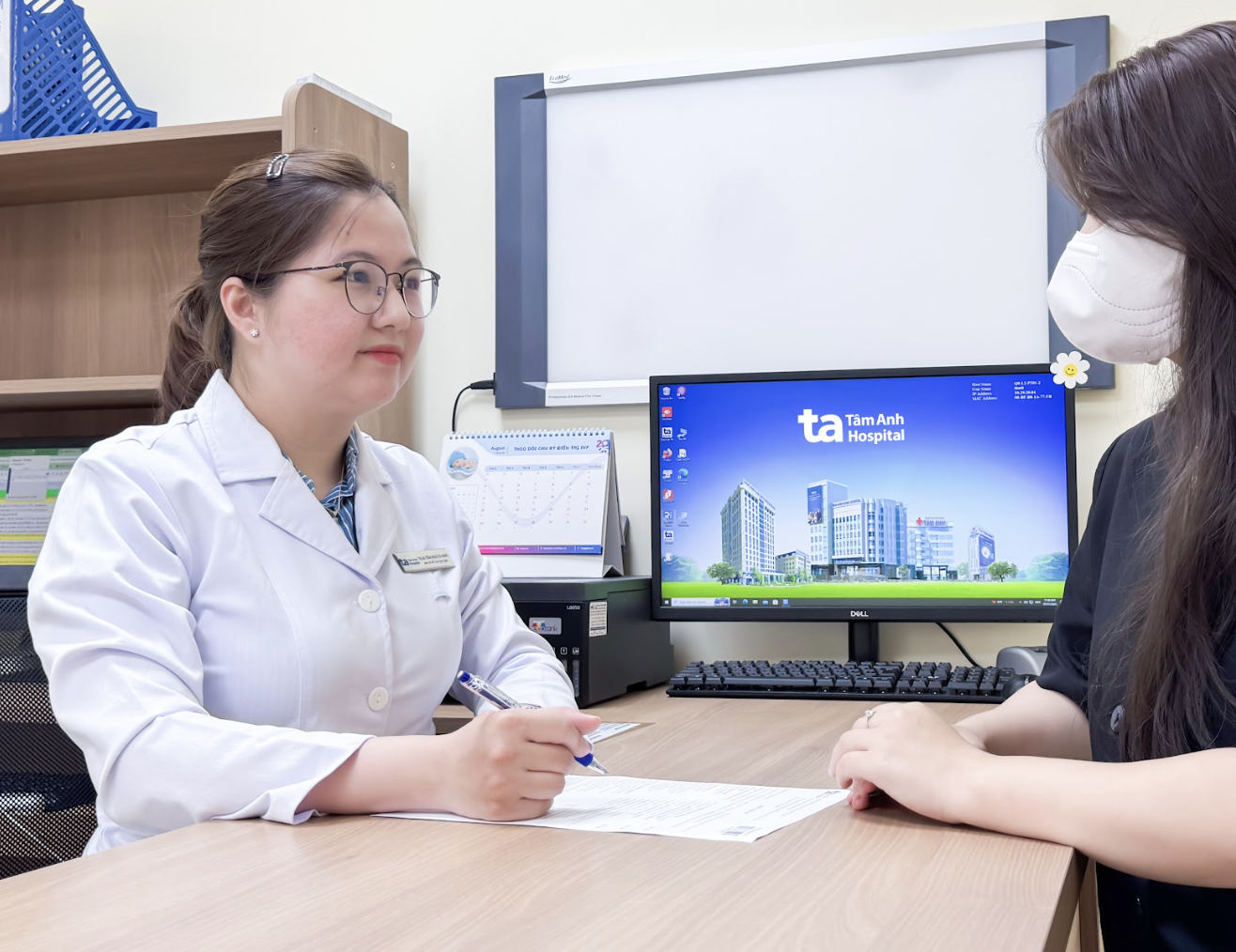Secondary infertility is defined as the inability to conceive after previously having a child or pregnancy. Hien and her husband, living in Ireland, already have a 5-year-old child. She had previously undergone in vitro fertilization (IVF) and fibroid removal surgery in Ireland, but two embryo transfers were unsuccessful. Last year, they returned to Vietnam and sought consultation at the Fertility Support Department of Tam Anh General Hospital - District 8.
Doctor Tran Ngoc Ha Giang diagnosed Hien with multiple uterine fibroids, endometriosis, chronic endometritis, and diminished ovarian reserve. These conditions can cause structural changes in the uterus, disrupt uterine motility, obstruct fallopian tubes, and create uterine scarring, all of which can impact conception and embryo implantation. These factors contributed to Hien's difficulty conceiving naturally and the failure of previous assisted reproductive treatments.
 |
Doctor Giang consults with the patient. Illustrative photo: Hoai Thuong |
The doctor prescribed ovarian stimulation medication for Hien and retrieved eggs for fertilization with her husband's sperm. The embryos were cultured in a modern time-lapse incubator system, allowing for continuous monitoring of their morphology and division. The couple successfully created six high-quality embryos: two 3-day embryos and four 5-day embryos. All embryos were cryopreserved while Hien underwent treatment to address her uterine issues.
Due to the severity of Hien's chronic endometritis, Doctor Giang prescribed a two-week course of antibiotics. At the end of 2024, Hien returned to Vietnam twice from Ireland to receive two endometriosis suppression injections, 28 days apart.
Once Hien's condition stabilized, Doctor Giang developed a protocol to prepare her uterine lining. When the lining was deemed suitable, a high-quality 5-day embryo was transferred. Hien conceived successfully and is currently 21 weeks pregnant with a healthy pregnancy. They have five remaining cryopreserved embryos and plan to return to Vietnam in the coming years for further embryo transfers and to expand their family.
According to the Ministry of Health, the rate of secondary infertility in Vietnam is increasing by 15-20% annually, accounting for over 50% of infertility cases. In women, the causes of secondary infertility are diverse and can include fallopian tube issues (blockage, fluid accumulation), uterine problems (fibroids, polyps, scarring or adhesions, endometriosis), hormonal imbalances, decreased egg quantity and quality, reproductive tract infections, and a history of abortion. Many women experience multiple conditions simultaneously, which can make infertility treatment more complex and lengthy.
Doctor Giang explained that as women age, egg quantity and quality decline, and the risk of developing conditions affecting overall and reproductive health increases. This leads to a lower conception rate, a higher risk of infertility, and increased chances of pregnancy complications such as miscarriage, premature birth, and birth defects. Therefore, women are advised to complete their families before the age of 35. Couples who have been trying to conceive for a year without success should seek medical evaluation and treatment promptly.
At Tam Anh IVF Center, the average pregnancy rate after embryo transfer in 2024 reached nearly 79%, with women under 28 having a success rate of nearly 85%. Patients from distant provinces or abroad receive remote monitoring and treatment support from doctors, reducing the challenges of distance and facilitating conception at a lower cost.
Hoai Thuong
*The patient's name has been changed.












